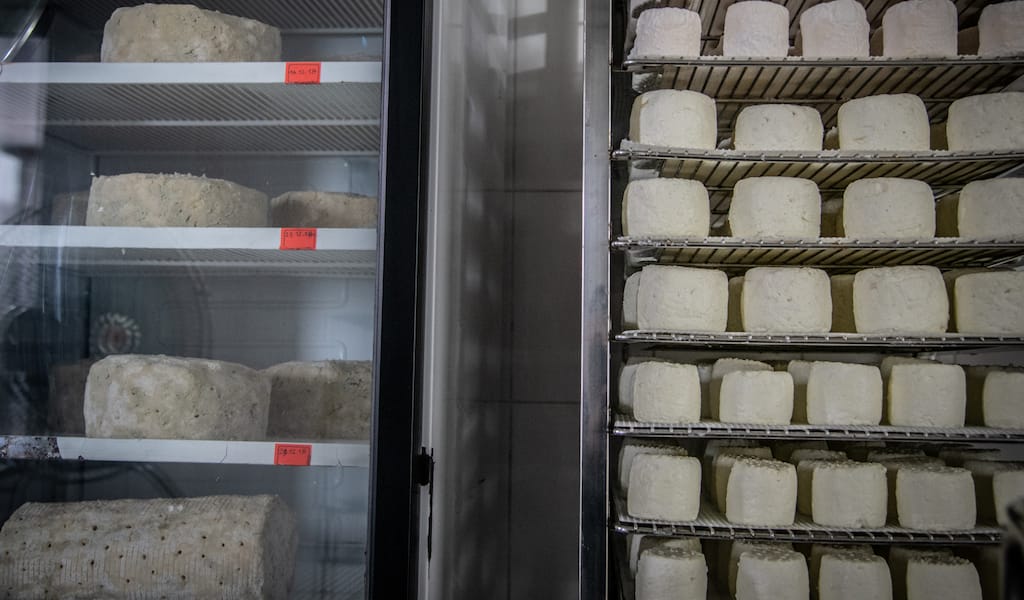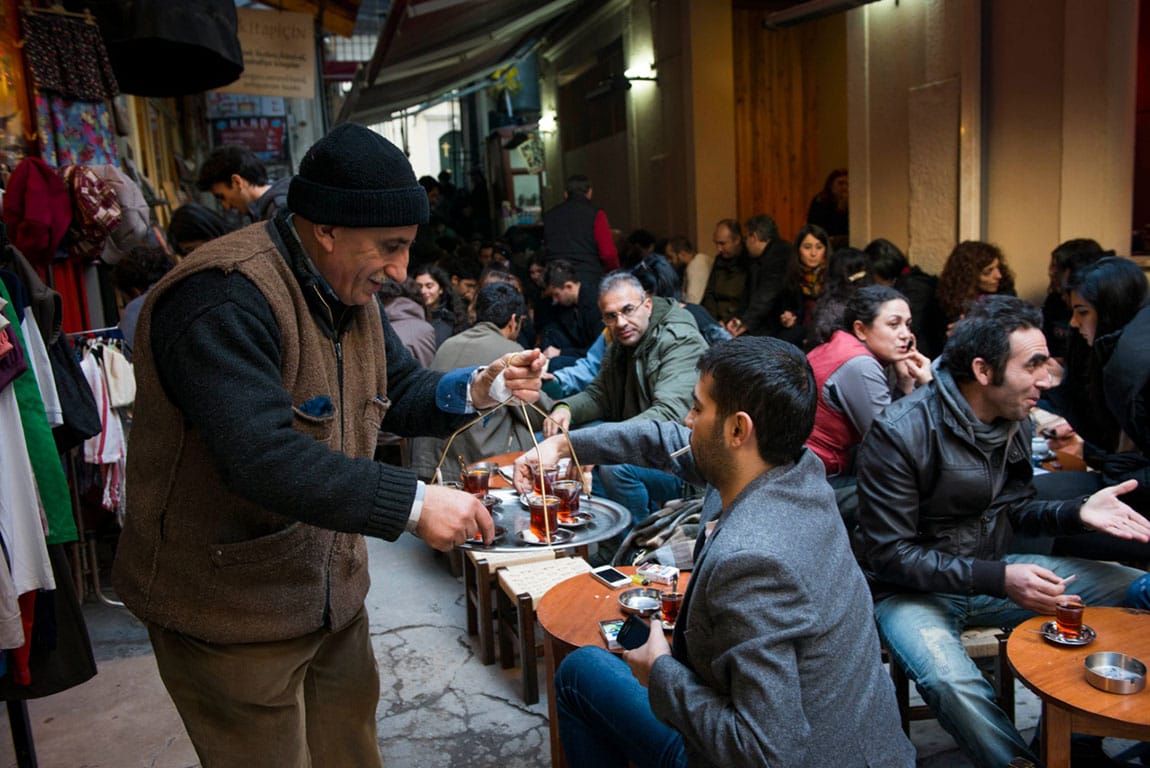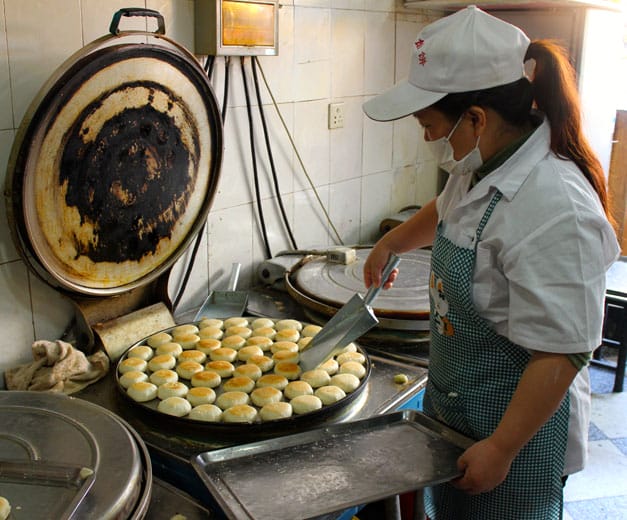Update: This venue is now closed.
Once the stomping ground of sailors and the Corsican mafia, Marseille’s oldest district, Le Panier, has evolved into a tourist hub and creative neighborhood. Its winding streets are peppered with ateliers (like blade smiths, chocolatiers and painters) and the 17th-century facades are canvases for colorful murals. One of them, a powerful black-and-white image of a couple kissing, faces the funky cantine and concept store, Ahwash. Its owner, Amar, commissioned the Alberto Ruce work – a sign of the artistic energy infused throughout his unique place.
Named for the traditional Berber dance in which men and women mix together, Ahwash is a blend of Amar’s worlds – of Morocco and France, of art and cooking. “Eating here is like coming to my house,” he smiles, serving tagines to patrons sitting at vintage tables topped with glowing candles, their dripping wax embodying the restaurant’s romantic and relaxed ambiance.
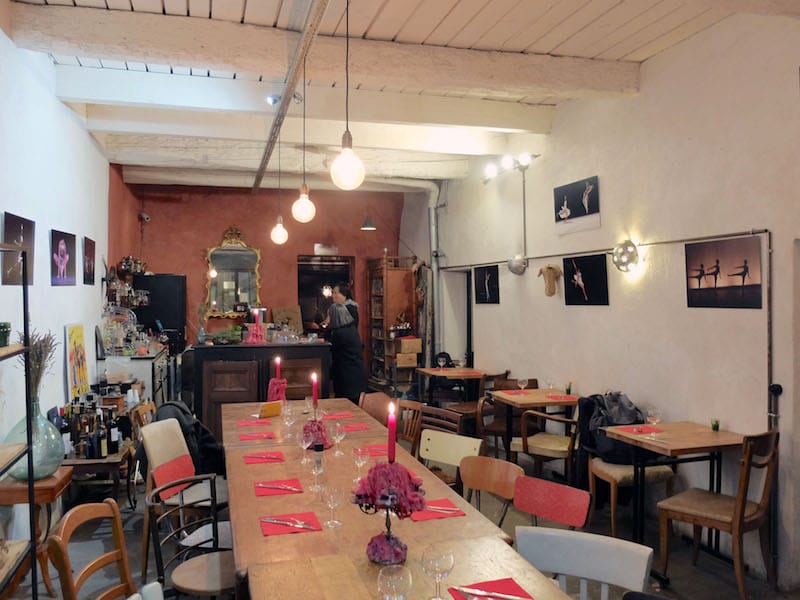
Everything at Ahwash has a story behind it. Amar’s mom’s cooking inspires the chicken tagine that sings with preserved lemons, turmeric, ginger and cumin. The Tamegroute green clay dishes for sale were sourced on a desert trip near Zagora. A pair of chairs are upholstered in cowhide that the fervent traveler bought in a Marrakesh souk. Even the bathroom door tells a tale, scribbled with the poignant Rudyard Kipling poem, “How to be a Man.”
Pasted between pages of old French comic books, Ahwash’s menu is Moroccan mingled with flavors of France.
Before this chapter of running a restaurant, Amar had various gigs. The self-proclaimed “Berber from Paris” was a sales manager, an insurance salesman and had worked every job in the restaurant business, from dishwasher to cook. His daughter sparked his transition to restaurant owner when she asked him to explain what he did for a living for a school project.
While telling her all about the insurance industry, he realized he wanted more out of life, and to have his work be aligned with his core values: sharing, creating, curiosity, passion, open-mindedness, conviviality and authenticity. These are the ingredients that feed Amar’s soul and his oh-so-personal restaurant that he built from scratch – literally – after a six-month restoration of the old space.
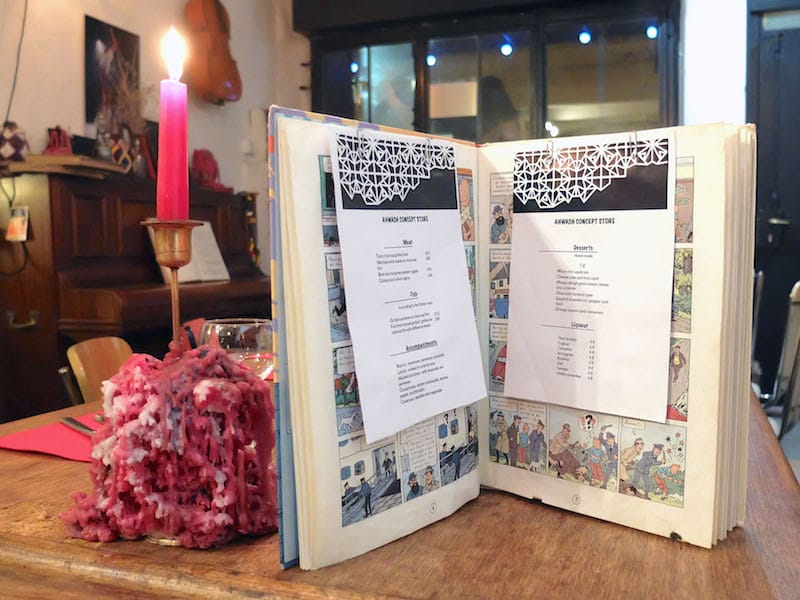
Pasted between pages of old French comic books, Ahwash’s menu is Moroccan mingled with flavors of France. Comforting mains include tagines and the incredibly tender mechoui, slow-roasted lamb shank. Thanks to the wood-fired grill, a leftover from the building’s former life as a chaudronniere (coppersmith), the grilled sardines, merguez and house-made kefta (spiced ground beef patties) are deliciously cooked over open flames.
You get to choose your own accompaniment. Don’t miss the chouckchouka, paprika-spiced sautéed peppers and tomatoes that are similar to Provencal ratatouille, or the decadent Parmesan mashed potatoes that evoke the Parisian bistros of Amar’s past. Bouchara helps him in the kitchen, a cook he chose by “feeling” not by culinary experience. As is the way this romantic rolls.
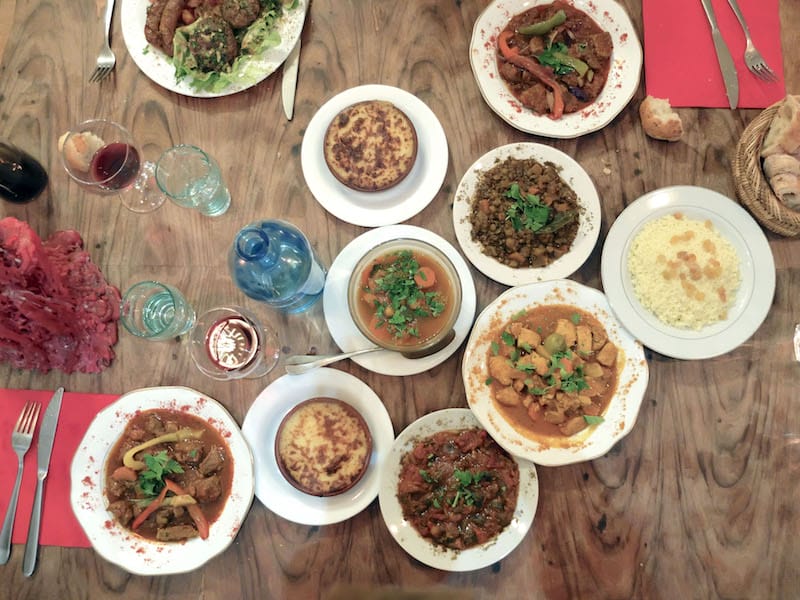
Alongside the giant communal table and in the attached store, you’ll find goods that Amar brings back from his adventures. Mouth-blown glasses – verre beldi – made from recycled glass, broken-in leather weekender bags, and Chabi Chic argan oil shampoo. French needlepoint bags and leather boots scooped up at French flea markets. You can even buy most of the furniture – except for those pieces t0 which Amar is sentimentally attached.
Ahwash is also ideal for a mint tea or a drink when strolling Le Panier or visiting the nearby Vielle Charité. Savor your beverage perched at the bar, or in the back room reclining on Moroccan pillows around a glass-topped piano. A dreamy setting when the fire is lit.
If you can, call in advance to confirm Amar isn’t off on his latest Moroccan adventure. When you reserve, you’ll arrive to a table with a personalized place card – a stone with your name written on it. We have never felt so welcome.
 February 27, 2019 Marleta Cheese
February 27, 2019 Marleta Cheese
She came to Kakheti from Tbilisi in 2005 and couldn’t drag herself away. The Alazani […] Posted in Tbilisi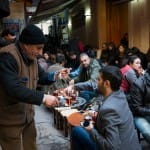 February 17, 2016 Hidden Beyoğlu
February 17, 2016 Hidden Beyoğlu
Quick bite: With Beyoğlu’s cosmopolitan history as a backdrop, on this food tour in […] Posted in Istanbul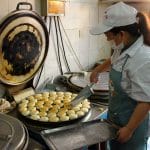 February 3, 2015 Dwarf’s Pastries
February 3, 2015 Dwarf’s Pastries
Shouning Lu is known as Crawfish Street, with street food vendors often stewing, […] Posted in Shanghai
Published on February 13, 2020
Related stories
February 27, 2019
TbilisiShe came to Kakheti from Tbilisi in 2005 and couldn’t drag herself away. The Alazani River Valley stretches long and wide to the feet of the Caucasus, the tallest mountains in Europe, which jut skyward like some citadel for the mountain gods. The expanse inspires reverence and awe. Kakheti intoxicates. “I want to live here,”…
February 17, 2016
IstanbulQuick bite: With Beyoğlu’s cosmopolitan history as a backdrop, on this food tour in Istanbul we will eat our way through the classic and unknown eateries of the neighborhood, the old and the new, tasting specialties from all over Turkey. Until recently, Greek, Armenian and Ladino (Judeo-Spanish) were the languages spoken in most kitchens in…
February 3, 2015
ShanghaiShouning Lu is known as Crawfish Street, with street food vendors often stewing, grilling and frying up the same seafood dishes up and down the one-block stretch. But there’s one land-lubbing vendor that has carved out a niche for itself: Ǎizi Xiànbǐng (矮子馅饼), or Dwarf’s Pastries. The eponymous snack (which, admittedly, translates crudely into English)…














































